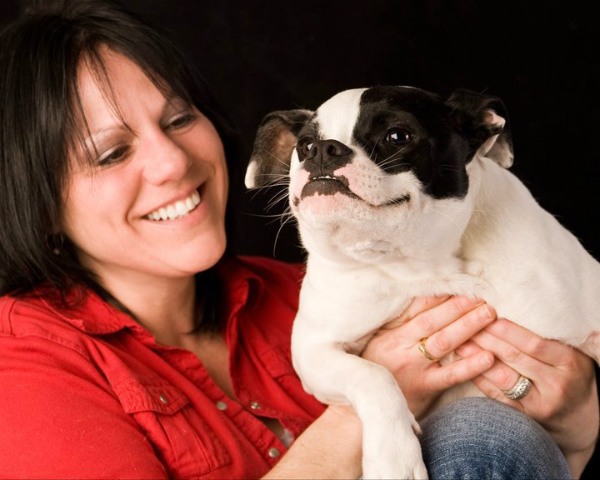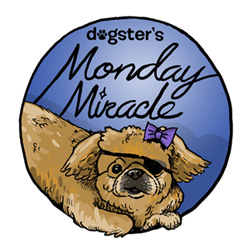When Julie LeRoy first laid eyes on a five-month-old puppy with an extreme underbite, long front legs, and a short, curved spine, the animal control officer knew she was looking at a dog who needed saving. LeRoy didn’t yet know anything about short-spine syndrome, the congenital anomaly that made the pup look so different, but she knew the dog was special.
“They brought her out on a leash made of a piece of twine,” LeRoy says, remembering that fateful day in Durham, North Carolina, when she first met the dog she would later adopt, Cuda.
“The couple — complainants [in a case unrelated to Cuda] — had asked me if I wanted to see her,” she recalls. “They had just had her for only two weeks, and they had bought her on Craigslist from a backyard breeder.”
When the little puppy was brought out, LeRoy couldn’t believe her eyes. The couple had mentioned the dog’s underbite, but they hadn’t prepared LeRoy for the extent of Cuda’s differences. She was shocked, and LeRoy knew this pup would not survive for long in the shelter system.
“I just thought, ‘I cannot bring this dog to the shelter; they’re not going to understand.’ It was a high-kill shelter — they’re going to euthanize her.”
The couple told LeRoy they needed to get rid of the dog right away, so she promised to come back after her shift. In the meantime, she began texting her husband, who was initially against the idea as the LeRoys already had four dogs at home.
Eventually, her spouse relented over text message, and LeRoy began mentally preparing herself to go back for the strange-looking puppy. Unsure of the extent of the dog’s special needs, LeRoy began to feel nervous. A small part of her hoped that the couple would decide to keep Cuda after all.
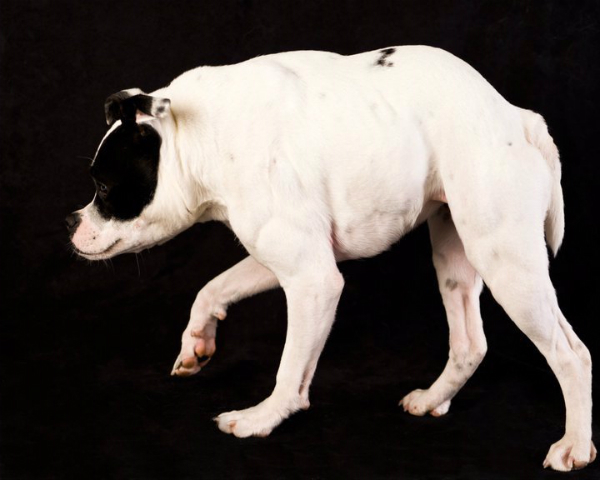
“But there she was, and I just put her in my arms,” says LeRoy, who has never regretted her decision to adopt Cuda.
Within two days of taking Cuda home, LeRoy sought medical attention for the pup, who needed to be spayed.
“The vet couldn’t find anything else odd,” she remembers, adding that Cuda was not in any pain, despite her compressed appearance. Her new pup was happy and healthy, but LeRoy still wondered if her physical deformities would shorten her life or cause her pain in the future.
“We thought she was the only one in the world for the longest time,” explains LeRoy. “I had just chocked it up to inbreeding.”

Eventually, LeRoy created a Facebook profile for her unique pup, documenting Cuda’s daily life. Social media proved to be the key to finding out more about what caused Cuda to look the way she did.
“I found another dog like her about seven months after I first put her online. That dog’s located in Italy,” says LeRoy, who also found out about Pig, another famous short-spine dog, through the social network.
The Italian dog’s human helped LeRoy learn more about short-spine syndrome and track down other dogs with the condition. LeRoy now knows of 11 short-spine dogs worldwide, the oldest one being 13 years old.
“They don’t know what causes it. It’s a congenital anomaly,” explains LeRoy, who has done extensive research on short-spine syndrome and says the rare condition was first identified centuries ago.
“There was actually an 18th or 19th century painter who featured one in a painting.”
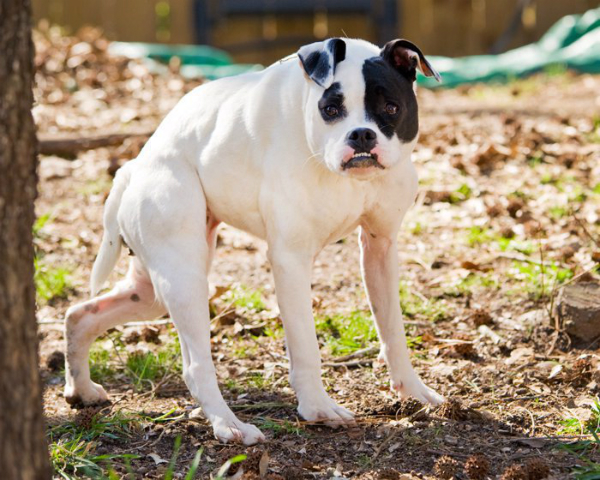
Humans in the 21st century are just as interested in looking at short-spine dogs as that painter was, and in 2011 LeRoy and her husband took Cuda to a place where plenty of people could get a good look.
“When she was about a year-and-a-half old, we took her to California for the World’s Ugliest Dog contest,” LeRoy remembers.
Cuda didn’t win, but did get third place in the pedigree division.
“She wasn’t feeling well on the way back from California, and I couldn’t figure out why. She kept getting worse and worse.”
When the LeRoys got home, young Cuda was diagnosed with diabetes. “None of the other short-spines have it. She’s been on insulin since she was about 18 months old.”
Managing Cuda’s diabetes has been the biggest challenge in caring for the unique dog. The disease, in combination with her short-spine deformities, has created some additional health issues for Cuda. According to LeRoy, Cuda’s extreme underbite made some of her bottom teeth loose from being constantly exposed to air.

“We proactively had them removed so that she didn’t develop an infection from the diabetes, so she’s now missing three front teeth.”
Cuda’s special needs don’t stop there. She also has a curly trachea and esophagus — a physical difference that caused great concern for her humans.
“One incident occurred where something was lodged and we couldn’t get it out and she passed out. My husband actually breathed into her mouth and dislodged whatever was there. It was the most terrifying thing.”
To ensure that doesn’t happen again, Cuda eats from a raised bowl and can only eat certain treats.
Despite her special needs, Cuda gets along perfectly with her animal siblings.
“She’s always trying to engage them in play,” says LeRoy. “Based on what I’ve heard from the other short-spine [dog] parents, they all have a very playful personality.”
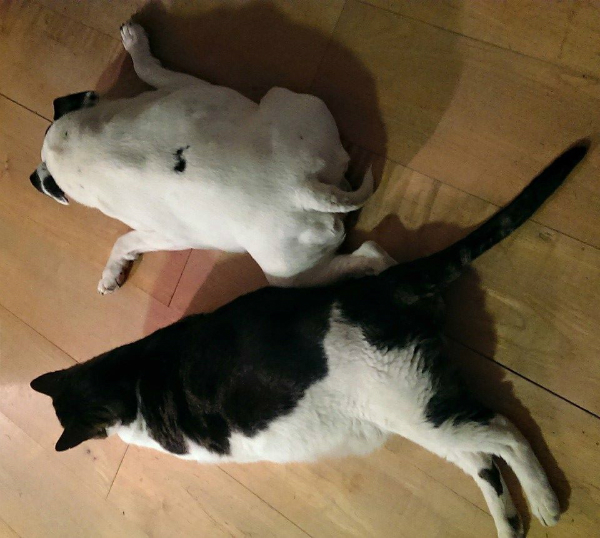
These days, LeRoy is busy chasing after Cuda and helping other people with special needs animals.
“I just want to educate people,” says LeRoy, who wants people to have all the necessary information before they adopt a special needs dog. “I want to develop a network so that if people have a short-spine dog they can pick up the phone and give someone a call.”
Putting Cuda online and creating her own network helped LeRoy clear up many of the mysteries about why Cuda was so different, which included her genetic background.
“We had her DNA tested when she was about a year old. One of her fans actually purchased the test just to see, and she was classified as a Staffordshire Terrier.”
Unlike most Staffordshire Terriers, little Cuda just happens to be smaller than the family cat.

Read more Monday Miracles on Dogster:
- Chihuahua Puppy Proves Two Legs Are Just as Good as Four
- Alex the Abused Korean Jindo Mix Gets a Third Chance at Life
- Hudson the Railroad Puppy Is Now a Therapy Dog With a “Blade Runner Paw”
About the Author: Heather Marcoux is a freelance writer in Alberta, Canada. Her beloved Ghost Cat was once her only animal, but the addition of a second cat, Specter, and the dog duo of GhostBuster and Marshmallow make her fur family complete. Sixteen paws is definitely enough. Heather is also a wife, a bad cook, and a former TV journalist. Some of her friends have hidden her feed because of an excess of cat pictures. If you don’t mind cat pictures, you can follow her on Twitter; she also posts pet GIFs on Google+.
Featured Photo courtesy Chariot Creative

